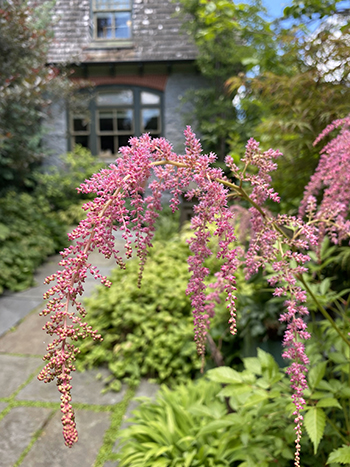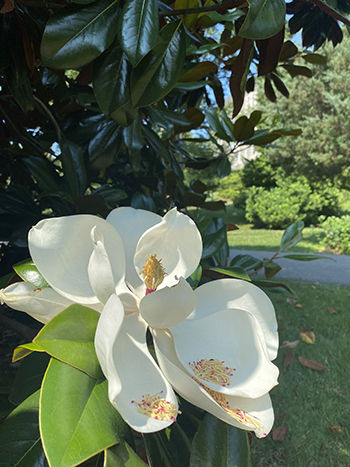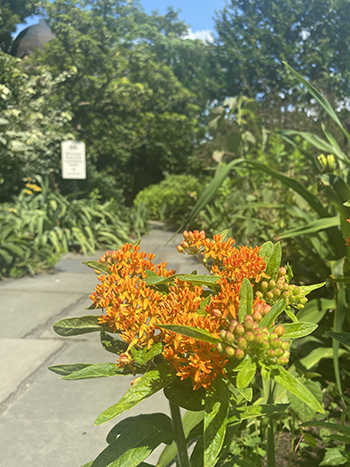
Plants of the Week: June 24
Guest Author: Patty Lally, 2024 Summer Intern

Astilbe thunbergii ‘Ostrich Plume’
Astilbe
Attempting to beat the summer heat, I’ve been finding myself seeking out more shade and shade plants like Astilbe thunbergii ‘Ostrich Plume’. This herbaceous perennial features fern-like mounds of ternately-compound leaves, with beautiful, pink, plume-like, weeping flower panicles. These weeping panicles create gorgeous pink waterfalls, making it an excellent addition for ponds or streambanks. ‘Ostrich Plume’ will do great in moist, well drained soils in shady or sunny spots. However, if the summer heat is too excessive, the leaves of ‘Ostrich Plume’ will begin to brown. With ‘Ostrich Plume’ blooming early summer, it serves as a warm (or hot!), welcome into the summer season. Unfortunately, its bloom time is almost over, so be sure to visit Astilbe thunbergii ‘Ostrich Plume’ by the Terry Shane Teaching Garden before it’s too late.

Magnolia grandiflora
Southern magnolia
Magnolia grandiflora, commonly known as Southern magnolia, stands beautifully tall in the face of adversity. This is one evergreen tree that will never get old, despite being one of the oldest flowering plants. Southern magnolias are equipped with ovate, glossy leaves with fuzzy copper undersides, and large ornamental white blooms. These creamy white blooms come with a luscious fragrance with notes of citrus and rose, making it a gardener’s dream to own. Rich soil complemented by partial shade is preferred, and needs ample space to grow as it may reach 60-80 feet tall. Its blooms are another excellent welcome to the summer season, you can find Magnolia grandiflora by the Benjamin West House in the Magnolia Collection.

Asclepias tuberosa
Butterfly milkweed
While walking through the gardens behind the Cunningham House, Asclepias tuberosa stuck out to me, literally. I almost walked on it before I noticed it’s beautiful, bright orange blooms. A. tuberosa is an erect perennial with a flat top filled with orange flowers, serving as a good source of nectar for the larvae of monarch butterflies. A. tuberosa, also known as butterfly milkweed, is one plant you can count on when planting in poor conditions. Being both drought and salt tolerant, with immunity to poor soils, it becomes an excellent choice in reclaiming disturbed sites with its deep taproot. Its preferred conditions are full sun and well drained soils, and is a low maintenance plant overall. You can find Asclepias tuberosa by the Terry Shane Teaching Garden.





No Comments